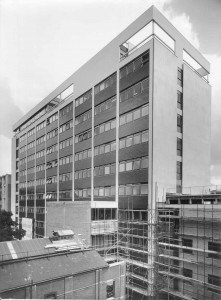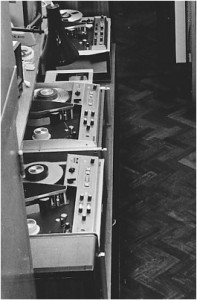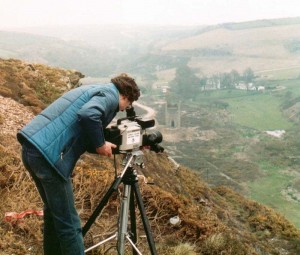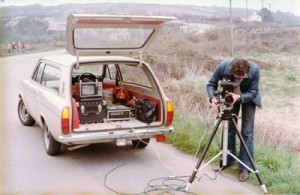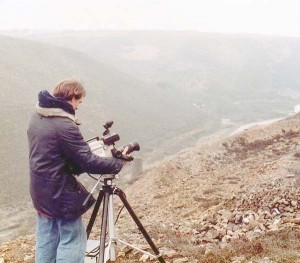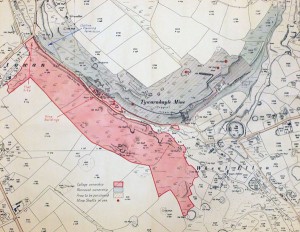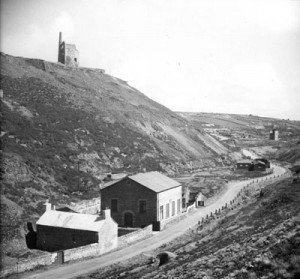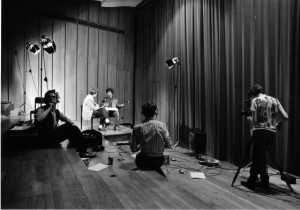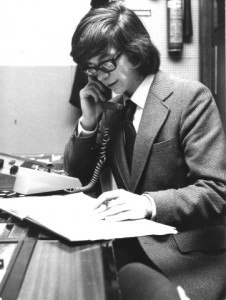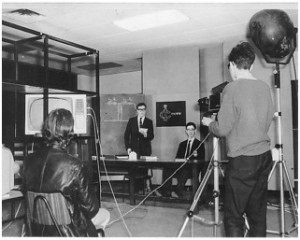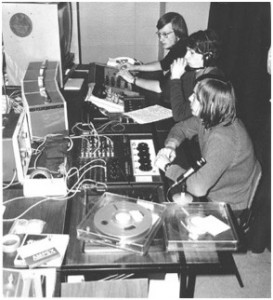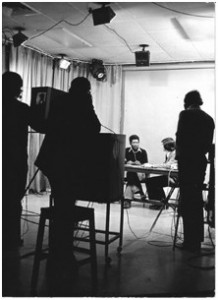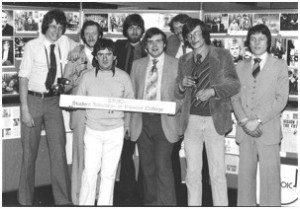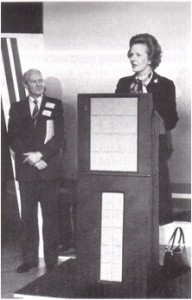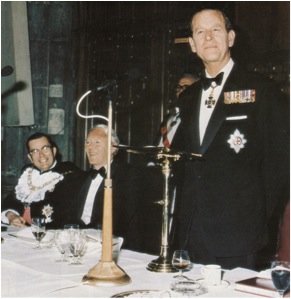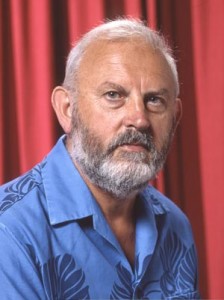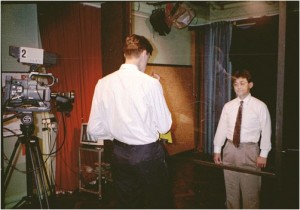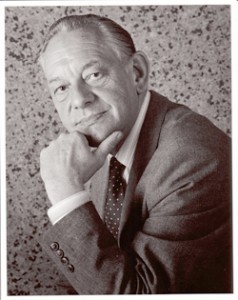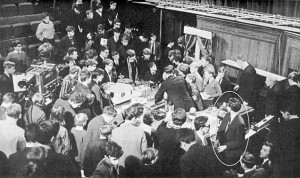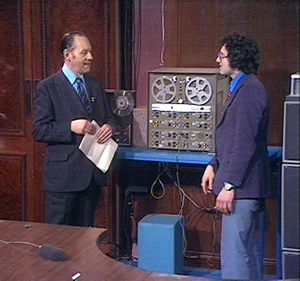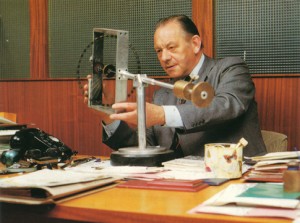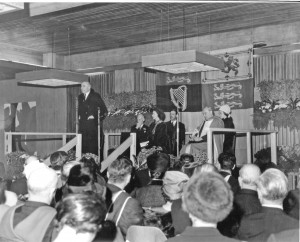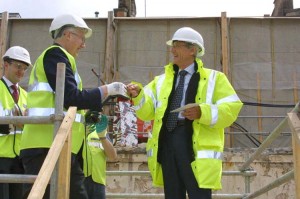One area where the archives are sadly lacking in both audio and videos recordings is on the subject of Imperial’s Nobel Laureates. And, as always, my appeal is to anyone who may have something to boost our collection, in either audio/video/film and so one. This current entry will focus on those Nobel Prize winners for whom we have recordings.
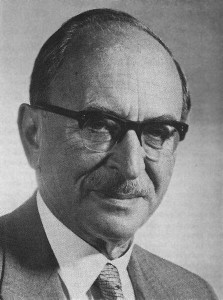
In 1948 Dennis Gabor (1900-1979) joined Imperial College as Reader in Electron Physics, he was appointed FRS in 1956 and Professor of Applied Electron Physics in 1958, retiring from the Chair to become Professor Emeritus and Research Fellow in 1967. His experiments on holography began in the 1940’s and on the flat television tube in the 1950’s. The model for his flat TV tube is held by the college archives. I met him only once when he was in our TV Studio to watch a film. On leaving, he spoke to me about the Sony colour TV we had. He said “Ah you have a Sony colour television” to which my reply was along the lines that the Japanese were very clever with their technology. He put his hand on my shoulder and told me that the principle of its workings (the TV’s single electron gun cathode ray tube) was something that he had proposed and suggested, but for which funding could not be found at that time and that the idea went to Japan and was used in those Sony televisions.
For the Invention of Holography, Gabor was awarded the Nobel Prize for Physics in 1971. A few months later on 22 February 1972 Gabor repeated his Nobel lecture, but this time for a special audience at Imperial. For us we are fortunate that a sound recording was made of the event. It’s not amazing quality, but I’ve done what I can with the sound to help improve it and also slowed down the tape that was clearly running too fast when I played it back. It’s introduced by the Rector at the time Lord Penney and there’s a vote of thanks by a departmental colleague, Professor Colin Cherry. That itself is interesting as the only sound recording we currently have of Cherry speaking at Imperial ++. Even more interesting are the references by both Penney and Gabor to power cuts. This was because of the 1972 Miner’s Strike and the so called “three day week”. Imperial, like all other places was subject to limited mains power during the day and at specified times the entire campus would be plunged into darkness….even Nobel Prize winners!
In 1981 I made a promotional video for the department of chemistry. A section within the video included one of the current students talking to Professor Sir Geoffrey Wilkinson (1921-1996) in the office. At the time, Wilkinson was head of department. It’s a pity that this is such a general video and that we never recorded anything more in-depth with him. I’ve been able to go back to the original ‘rushes’ (that is the original videotape shot at the time) of this interview to improve quality slightly, but it was made 30 years ago on our original low-band U-matic colour recording system (a single-striped faced, vidicon tube camera).
The only other recording of him was made in February 1992. this was for a video called “Snapshots”. The video brought together some of the current research being carried out at Imperial and showcased it for, primarily, an external audience. This sequence however is very short indeed and is the only record we have of Geoffrey Wilkinson in his research lad. And, for what ever reason, I don’t seem to have the original rushes any more so can’t see if there was anything else recorded at the time.
Finally we take a look at Professor Lord George Porter (1920-2002). He became chairman of the Centre for Photomolecular Sciences (and Professor of Photochemistry) at Imperial in 1987. He received a Nobel Prize in Chemistry in 1967. He was a former Director of the Royal Institution (1966-1985) and this was when I first met him. That was during the 1966 televising of the Christmas Lectures with Eric Laithwaite (see Laithwaite blog entry). This first recording is fun because we recorded it in his lab in the basement of the Beit Building. It’s full of lasers, for which I’m sure he should have been wearing safety glasses.
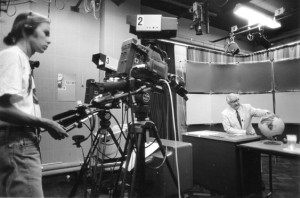
Lastly, a unique recording of Lord Porter. This was not actually a planned videotaped lecture as such. In August 1995 he was asked to give the 10th Lee Kuan Yew lecture in Singapore. As he was unable to attend in person it was suggested he gave the talk via a videoconference link. We re-arranaged our TV studio to allow it to link into our videoconference system. You may spot him looking down at a monitor which was showing him the audience in Singapore and at one point talking to Martin Sayers behind the camera to confirm timings. He was very easy to work with and like Eric Laithewaite skilled in presenting on TV and film.
Prior to the day, he telephoned me several times to discuss details. He had a habit (so I was told) of sitting in his garden in summer months and making calls on a cordless phone. However, he was always at the limit of range of the base unit and was barely audible, so the call was full of hiss and crackle. It was only by chance that I happened to put a videotape into a recorder to make a record of the event and I’m glad I did. So here is the lecture, given live to Singapore, on a very hot London day on 2 August 1995. And because it was so hot, we left the usually noisy air-con unit switched on and you may hear that in the background.
Colin Grimshaw June 2010
